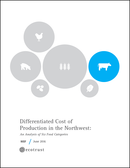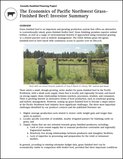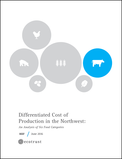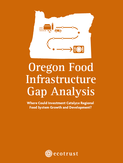Grass Finished Beef |
Research Chapters
|
|
Overview
Grass-finished beef is an important and growing production system that offers an alternative to conventionally raised, grain-finished feedlot beef. Grass finishing promises superior animal welfare, as well as a range of environmental benefits if approached using rotational grazing or a related practice such as holistic management. The USDA defines grass-fed (grass-finished) beef as beef raised with continuous access to pasture over its lifecycle. There exists a small, though growing, niche market for grass-finished beef in the Pacific Northwest, with a small-scale supply chain that is locally and regionally focused, and based on strong supply chain relationships between ranchers, processors, retailers, and consumers. There is growing interest in alternative forms of beef production, such as rotational grazing and holistic management. However, scaling up grass-finished beef to become a major player in the Pacific Northwest beef industry faces significant challenges. The three most important challenges identified by our producer contacts and the published literature are:
In general, Grass-finished beef is generally not price competitive with feedlot beef unless corn prices are very high. According to existing enterprise budget data, grass-finished beef can be economically viable in comparison with feedlot beef, provided that three important conditions are present:
Supply Drivers
Demand Drivers
Opportunities There is reason for optimism about the trajectory of grass-finished beef in the Pacific Northwest, given that the overall market trend is upwards. Consumers have revealed willingness to pay price premiums for grass-finished and locally raised beef. And there are key success stories in the development of niche markets and supply chains for Pacific Northwest grass-finished beef. Thus, we believe that despite the challenges, there may exist opportunities for profitable investment in grass-finished beef, provided that the investor pays attention to the following issues:
For more detail on the economics of grass-finished beef production in the Pacific Northwest download Production Analysis: Beef from the sidebar. |
Downloadable FilesBelow are combined and individual files related to beef production and infrastructure opportunities in WA and OR. To stay informed about next steps from this research please share appropriate information below.
Combined FileIndividual Files |











